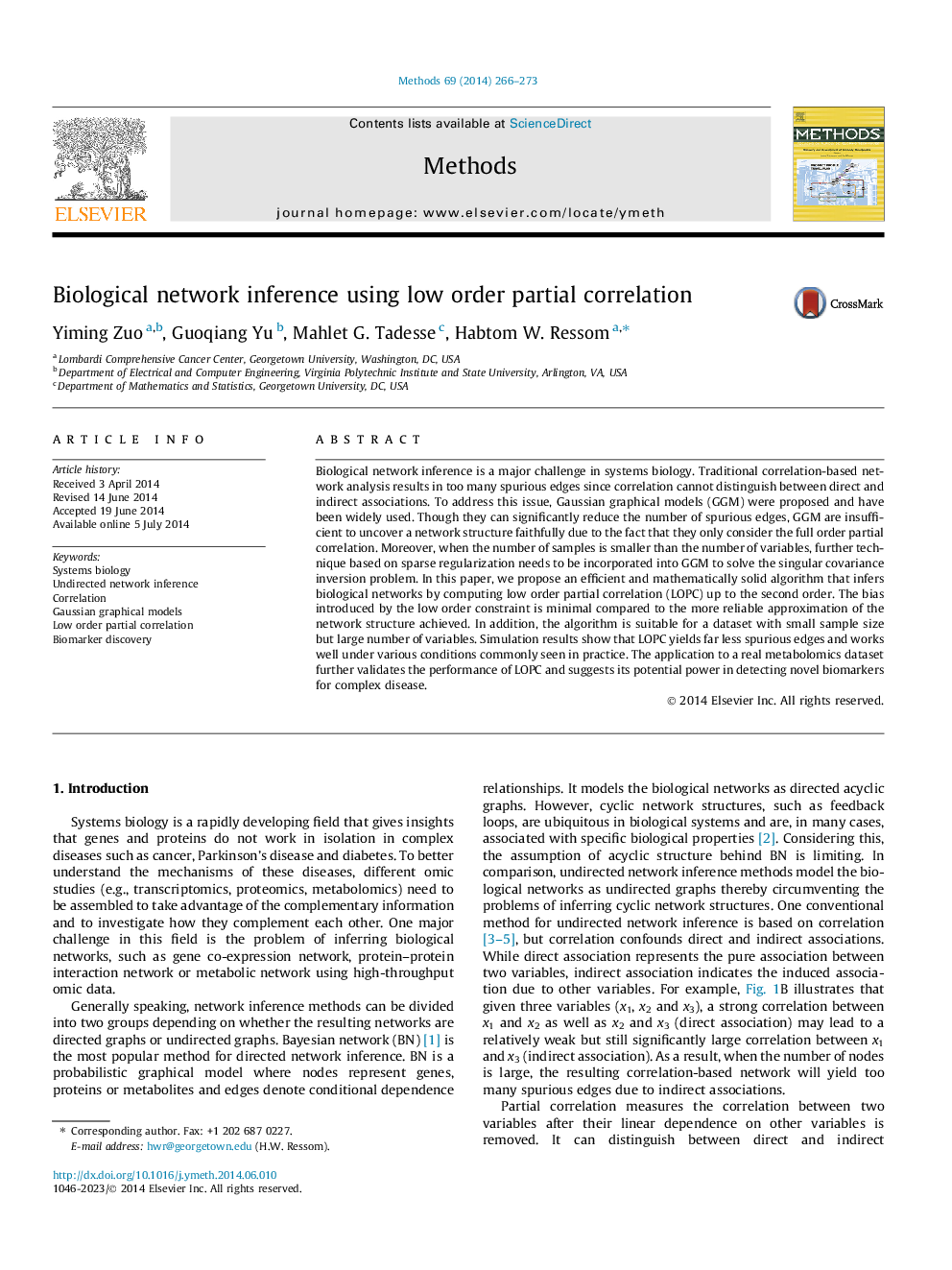| Article ID | Journal | Published Year | Pages | File Type |
|---|---|---|---|---|
| 10825643 | Methods | 2014 | 8 Pages |
Abstract
Biological network inference is a major challenge in systems biology. Traditional correlation-based network analysis results in too many spurious edges since correlation cannot distinguish between direct and indirect associations. To address this issue, Gaussian graphical models (GGM) were proposed and have been widely used. Though they can significantly reduce the number of spurious edges, GGM are insufficient to uncover a network structure faithfully due to the fact that they only consider the full order partial correlation. Moreover, when the number of samples is smaller than the number of variables, further technique based on sparse regularization needs to be incorporated into GGM to solve the singular covariance inversion problem. In this paper, we propose an efficient and mathematically solid algorithm that infers biological networks by computing low order partial correlation (LOPC) up to the second order. The bias introduced by the low order constraint is minimal compared to the more reliable approximation of the network structure achieved. In addition, the algorithm is suitable for a dataset with small sample size but large number of variables. Simulation results show that LOPC yields far less spurious edges and works well under various conditions commonly seen in practice. The application to a real metabolomics dataset further validates the performance of LOPC and suggests its potential power in detecting novel biomarkers for complex disease.
Related Topics
Life Sciences
Biochemistry, Genetics and Molecular Biology
Biochemistry
Authors
Yiming Zuo, Guoqiang Yu, Mahlet G. Tadesse, Habtom W. Ressom,
